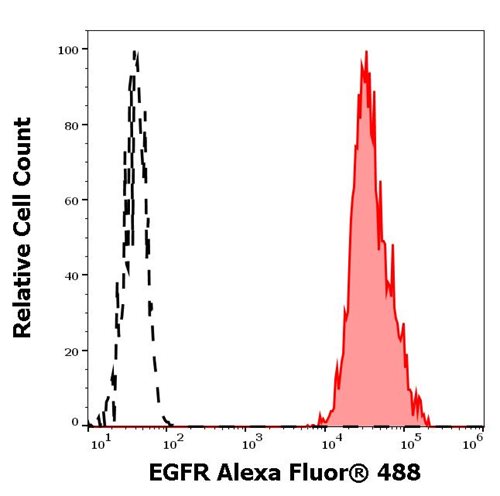Recombinant human FAP Protein with N-terminal His Tag(Discontinued)

Figure 1. Human FAP Protein, His Tag on SDS-PAGE under reducing condition.
Roll over image to zoom in
Shipping Info:
For estimated delivery dates, please contact us at [email protected]
| Amount : | 100 µg |
| Purification : | The purity of the protein is greater than 95% as determined by SDS-PAGE and Coomassie blue staining. |
| Content : | Lyophilized from sterile PBS, pH 7.4. Normally 5 % - 8 % trehalose is added as protectants before lyophilization. |
| Storage condition : | Store at -80°C for 12 months (Avoid repeated freezing and thawing) |
| Alternative Name : | FAP,FAPalpha,SIMP,Seprase,APCE |
Expression Host : HEK293
The protein has a predicted molecular mass of 85.9 kDa after removal of the signal peptide.The apparent molecular mass of His-FAP is approximately 95-130 kDa due to glycosylation.
The protein encoded by this gene is a homodimeric integral membrane gelatinase belonging to the serine protease family. It is selectively expressed in reactive stromal fibroblasts of epithelial cancers, granulation tissue of healing wounds, and malignant cells of bone and soft tissue sarcomas. This protein is thought to be involved in the control of fibroblast growth or epithelial-mesenchymal interactions during development, tissue repair, and epithelial carcinogenesis. Alternatively spliced transcript variants encoding different isoforms have been found for this gene.
The protein has a predicted molecular mass of 85.9 kDa after removal of the signal peptide.The apparent molecular mass of His-FAP is approximately 95-130 kDa due to glycosylation.
The protein encoded by this gene is a homodimeric integral membrane gelatinase belonging to the serine protease family. It is selectively expressed in reactive stromal fibroblasts of epithelial cancers, granulation tissue of healing wounds, and malignant cells of bone and soft tissue sarcomas. This protein is thought to be involved in the control of fibroblast growth or epithelial-mesenchymal interactions during development, tissue repair, and epithelial carcinogenesis. Alternatively spliced transcript variants encoding different isoforms have been found for this gene.
|
There are currently no product reviews
|













![Pacific Blue Conjugated Anti-CD34 / Mucosialin Monoclonal Antibody (Clone:4H11[APG]) Pacific Blue Conjugated Anti-CD34 / Mucosialin Monoclonal Antibody (Clone:4H11[APG])](https://media.abeomics.com/images/30-1185PB/1.jpg)











.png)











